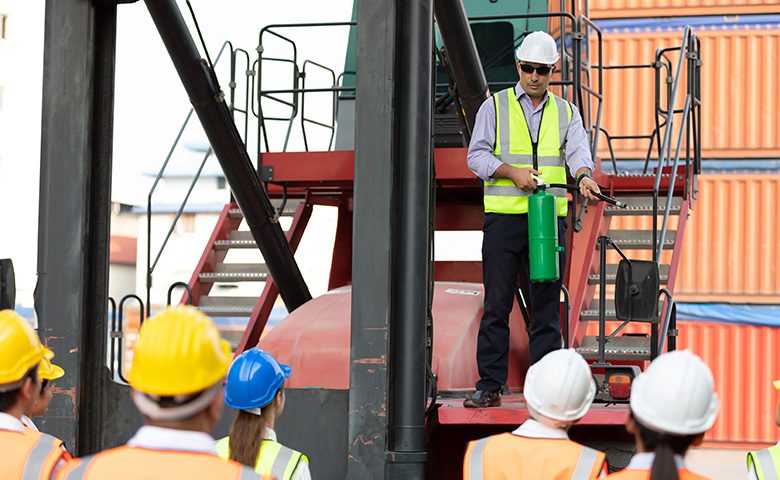This is an excerpt from our free guide on becoming a master of safety training. It reviews several techniques that can help you improve the results of your current EHS training program.
Doing = Learning
There’s no substitute for practice. There’s also no such thing as too much practice. When trainees do something repeatedly, their brain forms new pathways that make it easier to perform that action in the future—their brains are literally rewired.
The hierarchy of controls places a great deal of importance on engineering solutions, and offering plenty of opportunities to practice safety skills is the best way to re-engineer people’s brains and alter their actions in the workplace.
But not all practice is equal. In fact, safety habits only develop if people are paying attention to what they’re doing. Having a conversation with a co-worker while fiddling with a fall arrest harness won’t help forge new habits and is a poor way to learn how to do a new task. Wherever possible, encourage a focus on the task at hand while practicing.
This also means that it’s incumbent on safety managers, supervisors and other frontline leaders to offer one-on-one coaching when possible. Positive reinforcement can also go a long way to keep up motivation over the long haul of habit development. And creating a safety climate in which workers feel psychologically safe to correct, and be corrected by, their co-workers and superiors can super-charge safety habits development.
Bring in the reinforcements
Learning is a process, not a one-off event. It would be great if you could teach workers something once and then—voila!—they know it for the rest of their lives. But people learn at different speeds, they pick up parts of training but not others, their memories are fallible.
Often, they need to encounter the same lesson in a variety of contexts before it fully sinks in. Which is why your training should include healthy doses of reinforcement through toolbox talks, safety posters, and direct interventions.
As you prepare for upcoming safety training, you should take a few minutes to plan for how you will remind workers about their safety lessons. What visual reminders can you put up around the workplace to trigger employees on new safety concepts? What can you discuss in toolbox talks to reinforce what was taught in training?
Here’s one of the most overlooked aspects of reinforcing safety training: supervisors and other leaders (including you) can have quick one-on-one conversations with workers throughout the workday. These informal chats should be used to prompt workers to put safety lessons to use, to talk about what they learned in training, and to help identify where there may be a gap in safety skills or knowledge that can be addressed before an incident occurs.
Take it outside the classroom
Safety training typically happens in the classroom. This is a shame because the value of safety training is actually put to the test in the workplace. So why not more closely connect learning and practice by teaching the lesson where it will be used?
Whenever possible, your safety training should focus on not only telling workers what to do but to show them how and where it’s done too.
Instead of giving trainees another video to watch, handout to read, or lecture to listen to, get them out in the workplace. Rather than giving them a list of lockout/tagout protocols, walk them through what each step looks like on the machines they use every day. In lieu of discussing hypothetical hazards, walk around the shop floor and point out actual hazards in the wild (or where hazards have appeared in the past). Even if you can’t get out of the classroom, you can at least include real-world examples in your lessons that workers have to deal with in their day-to-day lives.
The goal here is to help workers apply knowledge as they learn it. There are two main benefits to doing so. First, it cuts down on the amount of memory required because they can see it or put it into action right away. Second, learning is often contextual, and lessons can better sink in when they’re taught in the same place where the knowledge will be applied. (This is why it’s a lot easier to learn how to drive when you’re sitting behind a steering wheel rather than in a classroom.)
Keep in mind that there likely isn’t time for proper one-on-one training with individual employees. That’s why it’s so important to get your supervisors to provide employees with additional coaching as necessary in the weeks and months following training. (But more on that later in the safety training guide.)

